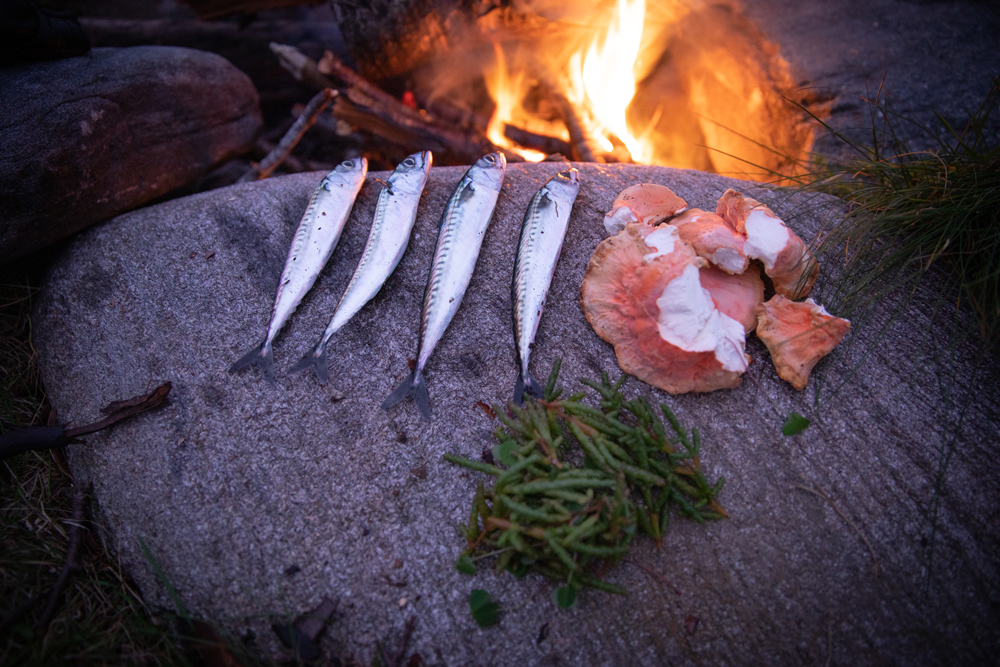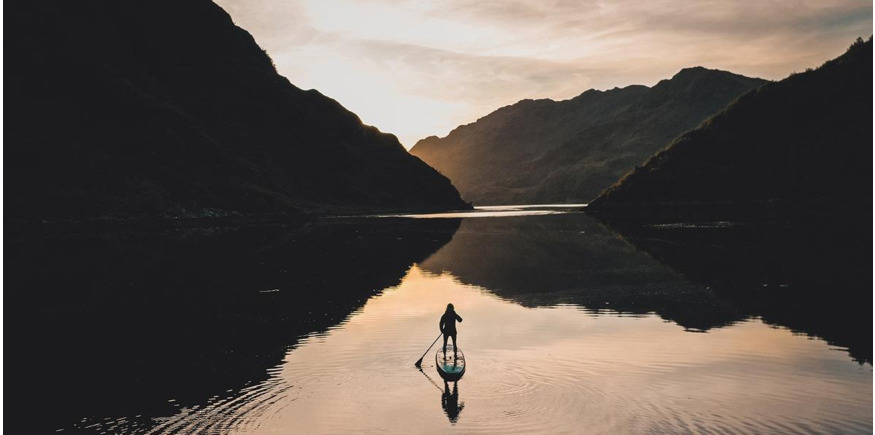SUP Camping in Scotland with a Ranger and Wildlife Guide
A couple of months ago, just as summer was coming to a close, a customer got in touch on Instagram looking for "two inflatable boards that would be fine to travel 10km plus each day," and be capable of carrying overnight kit plus filming and surveying gear.
It's not everyday we get asked to advise on such specifics, especially when peak season is winding down and the cold is on the way. So, after advising that a pair of our Sport Air 12'6" Touring boards would be unbeatable for long distances laden with gear and overnight adventuring, we had to probe further into Mr Pete Short's plans...
Hi Pete, to start with, just tell us a bit about yourself and your work.
I spend most of my time outdoors with a camera, looking for wildlife and interesting landscapes. I grew up in Rochdale, near Manchester and went to Newcastle to study Zoology. After spending three years in agronomy research, I moved to the Lake District, working with the BBC Natural History Unit as a mountain guide and photographer.

I am now a ranger and wildlife guide at the Aigas Field Centre, in the Scottish Highlands. Most of my current work involves taking folks around the mountains, glens and coastlines looking for wildlife, which is brilliant! Being a ranger also involves practical conservation, working with kids and surveying wildlife too. I live with my girlfriend Jo, a doctor & expedition medic, in an off-grid place up a glen, west of Inverness. She’s also a keen paddler.

Living so far north in the UK is incredible - we are inundated with mountains, lochs, waterfalls, beaches, rivers - all of them involving water in some way, and these landscapes can be tricky to navigate on foot. I knew that at some point I would get a craft that could handle multi-day journeys to remedy this - but hadn’t realised it would be a paddleboard!
I had rented a couple of boards from a local kit store for three days this July. One of them was the warmest day of the year and me and a few friends were able to spend the days island hopping across various lochs over on the west coast. The ability to deflate the boards and carry them relatively easily on your back was a plus, as was their deflated storage size. While a Canadian canoe has plenty of benefits, easy household storage is not one of them.
How did the paddleboards fare on the lochs, carrying camping gear and helping to watch wildlife?
My problem with the SUP’s I had rented before was they were a little on the small side - easy to turn, but they definitely blew around a bit on a big loch over 10 miles in length. I loved the feeling of standing up while gliding through the water, but needed to think about more durable, bigger boards if they were going to handle multi-day trips.


We opted for your 12’6" touring boards to try and match the carrying capacity of a canoe as we had to take all of our kit in with us. Volume is everything and you need a big board to carry large amounts of kit - simple enough. We were able to supplement our food supplies with fish, foraged mushrooms and coastal plants and get all of our water from streams tumbling down from the mountains.
We had two bags on each board - one large duffel with camping paraphernalia and one drybag with a hiking rucksack and pair of boots, ready at any point to ditch the SUPs and head out on foot. We ended up climbing quite a few of the mountains around Knoydart, so this was handy.
The longer board size means they cut through the water like an arrow. It naturally makes them far harder to turn, but the principle is the same as a longboard vs shortboard when surfing. A long fin can be attached at the back of these SUPs to enhance these properties - the value of this can’t be understated as it cuts down on the amount of wiggling and weaving you do, in an ‘S’ pattern. You really feel the increased efficiency when paddling more than two or three kilometres, particularly with a loaded board.


As for wildlife, during the week we got great views of otters, porpoises, white-tailed and golden eagles, harbour seals, along with the usual suspects like deer and ptarmigan. The thing with SUP’s, like canoes, is that they are relatively quiet. You can paddle slowly and quietly without making much noise and the animals themselves don’t seem to mind. That’s not to say you should go out trying to get close to everything, but naturally some animals are curious, the seals in particular.
So you went out for five days! Where did you go and what was the aim? Did it take a lot of planning?
I wanted to get to an area of Scotland I’d never been to before – Knoydart. It’s easily one of the most remote parts, with us seeing a mere two other people for the entire duration of the trip. It has spectacular mountains plunging down to deep, blue lochs - perfect! The aim was to unplug for the week, which is becoming harder to do by the day, with all the trappings of modern-day life. Also, any wildlife always makes the day interesting, so the more of that the better.
We did a sensible amount of planning, packing for all weathers and looked at the tides, wind speeds and mountain weather forecasts in particular. We chose our launch position and time to be on a receding tide, meaning the water below helped to shunt us down the sea loch, which was long and narrow.


We aimed to paddle with the wind where possible, which we managed to do on the way back. The wind changes often in landscapes like this, which can turn a one hour paddle into a four hour paddle. The wind can help you hugely or just stop your trip in its tracks with one fell swoop. On an expedition through Sweden and Norway in 2015 a foul headwind blew the four of us and our canoes back inland within five minutes of launching and ground any potential progress to a halt for an entire day.
Were you covering a lot of distance paddling?
We covered a total of 42km in five days, with a mixture of winds, some favourable and some less so. We had sunshine, cloud and rain at points in each day so had to pack kit for all weathers. On our return we were able to use a tarpaulin, stretched between the SUPs as a makeshift sail to give ourselves a break from paddling. It’s by far the longest trip yet I’ve done on an SUP, but it was an utter success. It was choppy and hard work at times, so it’s important to be in control of your board and have the capability to grit your teeth and keep paddling, or simply get to shore if necessary.


What was your highlight of the trip?
The porpoises stole the show. One morning we woke up in the tent to a calm sea of glassy water. When you get conditions like that, you just drop everything and get in amongst it. We left all of our kit in the tent and just took the bare essentials, paddling out to the middle of the loch.
We were soon to find that we weren’t alone- hearing them before we saw them, a pod of 24 harbour porpoises had surrounded us! They are usually fairly shy creatures but were well at home here. They make a ‘huffing’ noise when surfacing for air, almost pig-like. I don’t usually see pods when out guiding, typically they are more solitary animals - but they can sometimes be seen grouping together like this, often while herding fish. To be right there amongst them was unbelievable - Knoydart is one of the few places in the UK where if you look around it’s difficult to see signs of human habitation, so naturally a lot of the wildlife does well from the reduced disturbance. In many ways I wish I’d reached for the camera, but I didn’t want to interrupt the moment or put them off with movement from above.
I have quite deliberately not given away exact locations from where we went on this trip – all of the places and many more are there to explore first-hand for those that make over there - that discovery is part of what makes the place special. Happy paddling!
Keep scrolling for the rest of the photos from the trip and to check out more of Pete's adventures, take a look at his Facebook, Instagram or website














